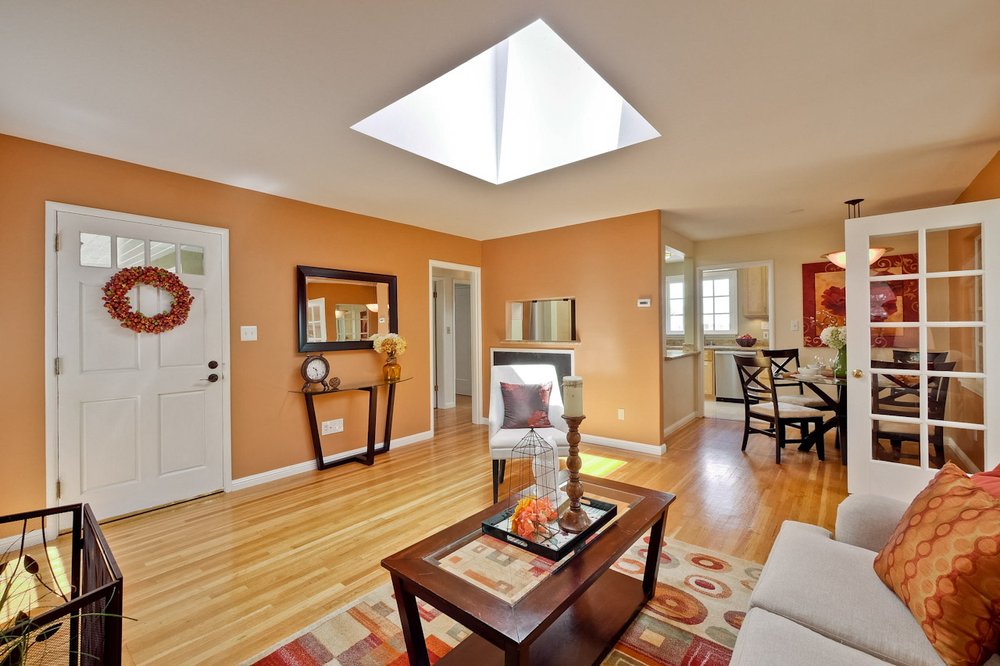Selling Your Home? Don’t Let These Common Misconceptions Lead You Astray.

One of the easiest ways to lose money on a home sale is to act on held misconceptions about the process. Photo: Howard Bloom – Intero Real Estate ©2019
In addition to the complex process involved, there are a lot of pitfalls to avoid when selling a home, many of which have significant financial consequences. Unfortunately, some homeowners can’t escape said pitfalls, often due to held misconceptions about appraisal, marketing and other parts of the process. To avoid difficulties with your home sale, consider these common seller misconceptions:
“I need to wait for the right season to sell my home.”
While this may be true in other areas of the country, it isn’t the case in the San Francisco Bay Area. Due to the mild year-round climate and ongoing demand for housing, the Bay Area real estate market maintains a perennial level of activity. While there are certainly seasonal spikes (summer is always a hot time for home buying), there isn’t really an off-season where no homes are being sold. And when the market does stagnate, it’s usually due to economic factors or market fluctuations, not the weather. So, don’t worry about the time of year—if you’re ready to sell, the right time is now.
“Any money I invest in home improvements will translate to a corresponding increase in resale value.”
Home improvements can certainly add to your home’s value, but if you aren’t careful, you can easily fall prey to the law of diminishing returns. This is largely because the true value of home upgrades is determined by the market, which is constantly fluctuating. While your upgrades may bring significant value in a seller’s market, they might not be as lucrative in a buyer’s market. Before making any big decisions, take the time to find out what specific home improvements are worth in the current market and which will bring the highest value for your investment.
Additionally, before putting big money into home improvements, consider the impact cosmetic upgrades (repainting, putting up new curtains, installing new door hardware) can have. These light-duty improvements can go a surprisingly long way toward boosting your home’s appeal to buyers and, as a result, its final sale price.
“I don’t need professional photos to sell my home.”
In today’s web-driven real estate market, the impact of photos can’t be overstated. With the majority of home searches being conducted online, the photos displayed on your digital listing will be the first impression most buyers have of your property. That’s why you want to display photos that showcase your home in its best possible light. According to research conducted by Redfin, home listings that feature professional photos receive 61 percent more views than those without, a statistic that holds true across all price tiers.

Professional photos can significantly increase your sale property’s appeal to buyers who are browsing listings online. Photo: The Dave Keefe Real Estate Team ©2019
“The appraiser’s valuation of my home is just their opinion—it’s not definitive.”
If you’re not satisfied with an appraiser’s valuation of your home, you may choose to simply discount their perspective. However, you should know that an appraiser’s assessment isn’t based on personal opinion but specific, well-established industry guidelines.
A central aspect of any home appraisal is the assessment of comparables—recently sold properties in your area that provide a basis for value comparison. To meet this criteria, a comparable must be located in a similar neighborhood as the sale property, have sold within the last 90 days, be in similar condition and be within a 10 percent variance of square footage. By averaging the values of at least three comparables, an appraiser can formulate an accurate estimate of what a property is worth in the current market.
With this in mind, it’s a good idea to pay attention to property sales in your area, as your home appraisal will likely reflect this. Also, keep in mind that since a home appraisal is based on definitive industry guidelines, it can be a powerful tool for negotiating with buyers.
“I’m better off having a buyer pay for inspections than paying for them myself.”
Inspections are a crucial part of the sale process because they allow buyers to verify they’re making a sound investment. Inspections range from the standard home inspection to the more specific sewer, roof and wood-destroying organism inspections. While sellers often leave inspections to be paid for by the buyer, there are many advantages to having them performed in advance.
For one, if buyers are able to see the full report on your home upfront, they’ll be more comfortable making an offer. Additionally, by ruling out unknowns, you reduce the risk of having a buyer back out of escrow—a common scenario when inspections reveal hidden problems. This will not only delay your sale but hurt your position in the market and, ultimately, your property’s sale price.
“I can calculate my home’s value using the average price per square foot.”
In reality, the average price per square foot has little to do with determining the value of your home. Why? Even though this metric takes square footage into account, it leaves out a great deal of other pertinent factors, such as location, lot size, and bedroom and bathroom count.
Take two homes that are roughly the same size, one of which is on a one-acre lot with a swimming pool, the other of which has neither of these features. If you compared these two using only price per square foot, you’d be greatly diminishing the value of the first home. This is a good example of why price per square foot won’t tell you much about your home’s actual market value.
“I should list my home at the maximum market value.”
While it makes sense on the surface, pricing your house at the top of the market isn’t always a good strategy. Believe it or not, a better approach is to list your home at slightly under market value. Why? First, since buyers are always looking for a good deal, reasonably priced properties always receive more attention than overpriced ones. Furthermore, since a listing generally receives the most attention during its first three weeks on the market, if you overprice, you could miss your opportunity by putting off deal-seeking buyers.
In addition to garnering more attention for your listing, underpricing your home is actually an effective way to increase its final sale price. With the increased attention your home receives, you’ll likely receive an increased number of offers, which will result in a bidding war. As the battle ensues, you’ll see your original asking price rise, potentially beyond what you initially hoped for.
“Staging my home is a waste of time.”
When showing your home, one of your key objectives should be appealing to the widest possible segment of the marketplace. The most effective way to do this is with professional staging, a technique that strategically employs elements like color, light, furniture and foliage to showcase a property. Besides creating a pleasant, neutral space, staging can broaden your home’s appeal to buyers who might not have otherwise considered it due to certain factors. For example, if your home is small in size, good staging can interpret this characteristic differently and show it in a more positive light.